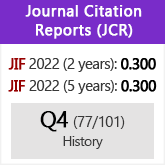Personal Empires: Mapping, Local Networks, and the Control of Land in the Lower Mississippi Valley
DOI:
https://doi.org/10.3989/chdj.2021.021Keywords:
Cadastral Survey, Land Grant, Spanish West Florida, Louisiana PurchaseAbstract
The Louisiana and Florida territories sat at the intersection of empires in the late eighteenth century. Between 1750 and 1820 the area was controlled by the French and Spanish empires, the emerging United States of America, as well as the Choctaw, Creek, and Seminole nations. While political surveys produced images of the moving borders between sovereign powers, cadastral surveys show the constancy of local landowners. Landowners superseded national distinction and were a constant in an area in the midst of great change. As control of the region shifted, landowning families continued their way of life. The continued circulation of Spanish cadastral surveys after the transfer of the region to the United States of America shows how Spanish spatial representations of property ownership shaped the image of the Lower Mississippi Valley.
Downloads
References
Adelman, J., and Aron, S. (1999). "From Borderlands to Borders: Empires, Nation-States, and the Peoples in Between in North American History." The American Historical Review, 104 (3), pp. 814-841. https://doi.org/10.2307/2650990
Akerman, J. R., ed. (2009). The Imperial Map: cartography and the mastery of empire. Chicago: University of Chicago Press.
Akerman, J. R., ed. (2017). Decolonizing the Map: cartography from colony to nation. Chicago: University of Chicago Press. https://doi.org/10.7208/chicago/9780226422817.001.0001
Benton, L. A. (2011). A Search for Sovereignty: law and geography in European Empires, 1400-1900. Cambridge: Cambridge University Press.
Black, J. (2009). "Change in Ancien Régime International Relations: Diplomacy and Cartography, 1650-1800." Diplomacy & Statecraft, 20, pp. 20-29. https://doi.org/10.1080/09592290902813080
Branch, J. (2015) The Cartographic State: Maps, Territory, and the Origins of Sovereignty. Cambridge: Cambridge University Press.
Brückner, M. (2006) The Geographic Revolution in Early America: Maps, Literacy, and National Identity. Williamsburg and Chapel Hill: Omohundro Institute of Early American History and Culture, University of North Caroline Press.
Carter, C. E., Porter Bloom, J., United States, Department of State, United States, and National Archives and Records Service. (1934) The Territorial Papers of the United States. Washington, D.C.: National Archives.
Craib, R. B. (2004) Cartographic Mexico: A History of State Fixations and Fugitive Landscapes. Durham: Duke University Press. https://doi.org/10.1215/9780822385943
Davis, N. Z. (1987) Fiction in the Archives: pardon tales and their tellers in sixteenth-century France. Cambridge: Polity Press.
Dym, J. (2017) "Democratizing the Map: Between Imperial and National Mapping in Guatemala, 1821‐2010." In: J. Akerman, ed., Decolonizing the Map: cartography from colony to nation. Chicago: University of Chicago Press, pp. 160-204.
Edney, M. H. (1999). Mapping an Empire: the geographical construction of British India, 1765-1843. Chicago: University of Chicago Press.
Fuentes, M. J. (2016). Dispossessed Lives: enslaved women, violence, and the archive. Philadelphia: University of Pennsylvania Press. https://doi.org/10.9783/9780812293005
Hass, E. F. (1986). "Odyssey of a Manuscript Collection: Records of the Surveyor General of Antebellum Louisiana." Louisiana History: The Journal of the Louisiana Historical Association, 27, pp. 5-26.
Hall, G. M. (1992). Africans in Colonial Louisiana: The Development of Afro-Creole Culture in Eighteenth Century. Baton Rouge: Louisiana State University Press.
Hanna, A. J. (1942). "Diplomatic Missions of the United States to Cuba to Secure the Spanish Archives of Florida." In: A. C. Wilgus, ed. Hispanic American Essays: A Memorial to James Alexander Hamilton. Chapel Hill: University of North Carolina Press, pp. 208-233.
Hébert, J. R. (1987). "Vicente Sebastián Pintado, Surveyor General of Spanish West Florida, 1805-17. The Man and His Papers." Imago Mundi, 39, pp. 50-72. https://doi.org/10.1080/03085698708592616
Kain, R. J. P. and Baigent, E. (1992). The Cadastral Map in the Service of the State: A History of Property Mapping. Chicago: University of Chicago Press. https://doi.org/10.7208/chicago/9780226764634.001.0001
Konvitz, J. W. (1987). Cartography in France, 1660-1848: science, engineering, and statecraft. Chicago: University of Chicago Press.
Kuethe, A. J., and Andrien, K. J. (2014). The Spanish Atlantic World in the Eighteenth Century: War and the Bourbon Reforms, 1713-1796. New York: Cambridge University Press. https://doi.org/10.1017/CBO9781107338661
Maier, C. S. (2016) Once Within Borders: Territories of Power, Wealth, and Belonging Since 1500. Cambridge, Massachusetts: The Belknap Press of Harvard University Press. https://doi.org/10.4159/9780674973909
Mapp, P. W. (2011) The Elusive West and the Contest for Empire, 1713-1763. Chapel Hill: University of North Carolina Press. https://doi.org/10.5149/9780807838945_Mapp
McMichael, A. (2008) Atlantic Loyalties: Americans in Spanish West Florida, 1785-1810. Athens, Georgia: University of Georgia Press.
Pickles, J. (2004) "Mapping the geo-body: State, territory and nation." In: A History of Spaces: cartographic reason, mapping, and the geo-coded world. New York: Routledge, pp. 107-123.
Sánchez-Fabrés Mirat, E. (1977) Situación histórica de las Floridas en la segunda mitad del siglo XVIII, 1783-1819: los problemas de una región de frontera. Madrid: Ministerio de Asuntos Exteriores, Dirección General de Relaciones Culturales.
Schmidt, G., trans., 1928. "O'Reilly's Ordinance of 1770: Concerning Grants of Land in Louisiana to New Settlers, Fencing of Same, Building of Roads and Levees, and Forfeiture of Strayed Cattle." Louisiana Historical Quarterly, 11, pp. 237-239.
Stagg, J. C. A. (2009) Borderlines in Borderlands: James Madison and the Spanish-American Frontier, 1776-1821. New Haven: Yale University Press. https://doi.org/10.12987/yale/9780300139051.001.0001
Strang, C. B. (2018) Frontiers of Science: Imperialism and Natural Knowledge in the Gulf South Borderlands, 1500-1850. Williamsburg and Chapel Hill: Omohundro Institute of Early American History and Culture, University of North Caroline Press.
"Trudeau, Charles Laveau" (2017) Dictionary of Louisiana Biography. Louisiana Historical Association. [Online]. Available at: https://www.lahistory.org/resources/dictionary-louisiana-biography/dictionary-louisiana-biography-t/ [Accessed: 21 January 2020].
Usner, D. H. (1996) Indians, Settlers, & Slaves in a Frontier Exchange Economy: The Lower Mississippi Valley Before 1783. Chapel Hill: University of North Carolina Press.
Usner, D. H. (2003) American Indians in the Lower Mississippi Valley: Social and Economic Histories. Lincoln: University of Nebraska Press.
Weber, D. J. (1982) The Mexican Frontier, 1821-1846: the American Southwest under Mexico. Albuquerque: University of New Mexico Press.
Weber, D. J. (1992) The Spanish Frontier in North America. New Haven: Yale University Press.
Withers, C. W. J. (2017) Zero Degrees: geographies of the Prime Meridian. Cambridge: Harvard University Press. https://doi.org/10.4159/9780674978935
Wood, G. S. (2011) Empire of Liberty: a history of the early Republic, 1789-1815. New York: Oxford University Press
Published
How to Cite
Issue
Section
License
Copyright (c) 2021 Consejo Superior de Investigaciones Científicas (CSIC)

This work is licensed under a Creative Commons Attribution 4.0 International License.
© CSIC. Manuscripts published in both the printed and online versions of this Journal are the property of Consejo Superior de Investigaciones Científicas, and quoting this source is a requirement for any partial or full reproduction.All contents of this electronic edition, except where otherwise noted, are distributed under a “Creative Commons Attribution 4.0 International” (CC BY 4.0) License. You may read here the basic information and the legal text of the license. The indication of the CC BY 4.0 License must be expressly stated in this way when necessary.
Self-archiving in repositories, personal webpages or similar, of any version other than the published by the Editor, is not allowed.

















